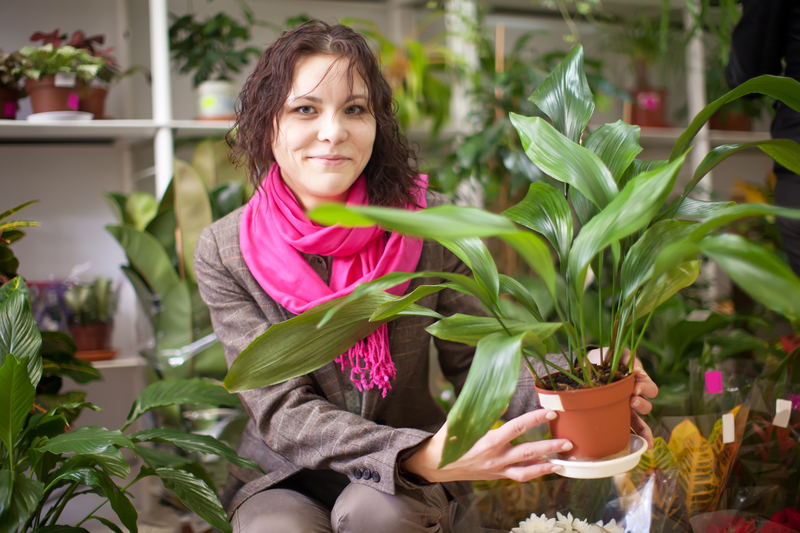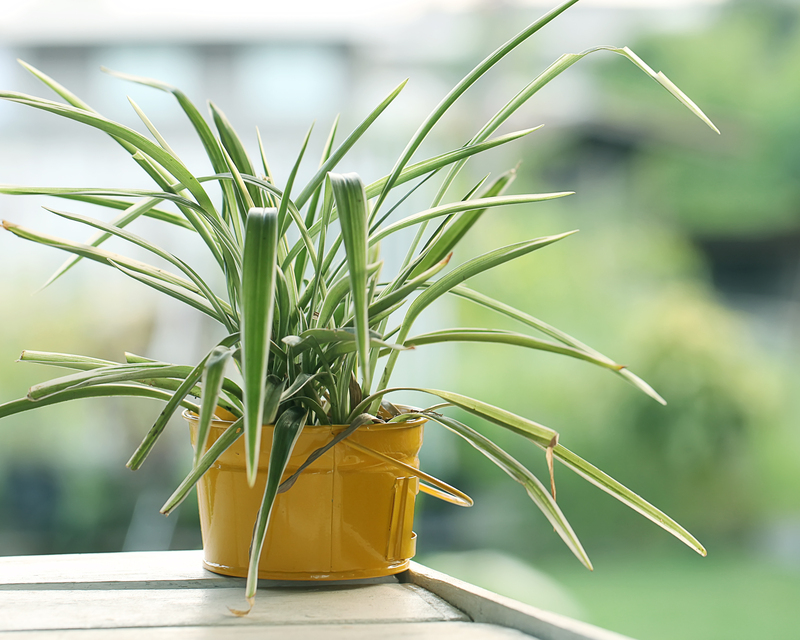Explore the World of Herbs with Your DIY Garden
Posted on 24/08/2025
Explore the World of Herbs with Your DIY Garden
Are you fascinated by the idea of having fresh basil, rosemary, mint, or thyme growing just outside your window? Imagine stepping into your backyard or onto your balcony and snipping fresh herbs directly for your evening meal or herbal tea. If this appeals to you, it's time to explore the world of herbs with your own DIY garden! In this comprehensive guide, you'll find everything you need to know to start, maintain, and enjoy an herb garden at home, whether you have a spacious yard or just a compact indoor space.

Why Create a DIY Herb Garden?
There's something magical about growing your own herbs, and the benefits go far beyond just culinary enjoyment. Let's look at why starting a home herb garden is a fantastic idea:
- Freshness at Your Fingertips: Homegrown herbs are always fresher than store-bought ones.
- Improved Flavor: Freshly picked herbs can enhance the taste of any dish.
- Health Benefits: Many herbs have medicinal properties and are packed with antioxidants.
- Cost-Effective: Growing herbs at home means no more expensive grocery store bundles that go bad before you use them.
- Therapeutic Activity: Gardening can reduce stress and improve your well-being.
- Environmental Impact: Minimize plastic packaging and food waste by growing what you need.
Herb Gardening: Indoor vs. Outdoor
One of the greatest advantages when you explore the world of herbs with your DIY garden is flexibility. You can grow herbs indoors or outdoors, in pots or in the ground. Here's how to choose the best method for your space:
- Indoor Herb Gardening:
- Ideal for apartments or homes without yards.
- Choose windowsills, kitchen countertops, or shelves with access to sunlight.
- Great for growing basil, chives, parsley, cilantro, and mint.
- Outdoor Herb Gardening:
- Perfect if you have a yard, patio, or balcony.
- Allows for a greater variety and scale of herbs.
- Sun-loving herbs such as rosemary, oregano, sage, and thyme do particularly well outdoors.
Getting Started: Planning Your DIY Herb Garden
Step 1: Choose the Right Location
Location is crucial when you explore the world of herbs with your own garden. Most herbs love sunlight -- aim for at least six hours of direct sunlight per day. If growing indoors, a south-facing window is ideal. Outdoors, avoid shady spots and pick a location with good air circulation and drainage.
Step 2: Select the Best Herbs for Your Garden
Not sure which herbs to grow? Start with easy, versatile choices. Here are some popular culinary and medicinal herbs that thrive in home gardens:
- Basil - Perfect for Italian dishes, salads, and pesto.
- Rosemary - Adds a fragrant touch to roasted meats and vegetables.
- Thyme - Excellent for stews, soups, and as a seasoning.
- Mint - Refreshing in drinks, desserts, and salads.
- Parsley - Universally used as a garnish and flavor enhancer.
- Cilantro - Essential for salsas, curries, and Mexican cuisine.
- Sage - Adds earthy flavor to poultry and stuffing.
Step 3: Decide Between Seeds and Starter Plants
Seeds vs. Transplants: Both options are viable when you explore the world of herbs with your DIY garden. Seeds are more affordable and offer a wide variety but take longer to establish. Starter plants are quicker to grow but might offer limited varieties and higher initial costs. Beginners might find success starting with a mix: buy transplants for slow-growing herbs (like rosemary and thyme) and start faster-growers (like basil and cilantro) from seed.
Designing and Planting Your Herb Garden
Container Gardening vs. In-Ground Beds
If you lack dedicated space, herbs grow well in containers. Use pots with proper drainage holes and select a high-quality, organic potting mix. Group herbs with similar water and sunlight needs together. Ornamental containers can double as attractive decor for patios or kitchens.
- Container Benefits: Mobility, easy customization, suitable for renters or small spaces.
- In-Ground Benefits: Larger harvest, easier to expand, and less frequent watering needed due to the soil's moisture retention.
Soil Preparation
When you explore the world of herbs with your DIY garden, soil health becomes paramount. Most herbs prefer well-draining, slightly alkaline to neutral soil. Amend your soil with organic compost and, if necessary, coarse sand to improve drainage. Avoid using heavy, clay soils or over-fertilizing, as herbs generally require low to moderate nutrients.
Plant Spacing and Arrangement
- Read the Labels: Each herb has different spacing needs. For example, basil and parsley can be planted relatively close (about 8 inches apart), while sage and rosemary need more room (about 18-24 inches).
- Companion Planting: Group herbs that thrive together and avoid mixing those with conflicting needs (e.g., don't plant thirsty basil with drought-loving rosemary).
- Consider Height and Sun Direction: Plant taller herbs at the back of garden beds or pots, so they don't shade out shorter plants.
Essential Care Tips for Thriving Herbs
1. Sunlight and Temperature
Most herbs love full sunlight. If your indoor garden doesn't get ample light, consider using supplemental grow lights to mimic the sun's effect. Place outdoor containers where they receive morning sunlight but are shielded from the harshest afternoon sun, especially in hot climates.
2. Watering Guidelines
Overwatering is the most common reason for herb garden failure. Herbs prefer to dry slightly between waterings. Stick your finger into the soil; if the top inch feels dry, it's time to water. Early morning is the best time to water, as it decreases the risk of disease.
- Tip: Mediterranean herbs (like thyme, oregano, and rosemary) prefer drier soils, while basil and mint like more consistent moisture.
3. Pruning and Harvesting Techniques
Pruning not only encourages bushy, healthy growth but also extends the productive life of your herbs. Snip frequently, focusing on harvesting from the top leaves to promote new shoots. Never harvest more than one-third of the plant at a time.
- Basil: Regular pinching keeps it from flowering and encourages lush leaves.
- Mint: Cut runners to prevent it from taking over the garden.
- Thyme and Oregano: Light trimming keeps them compact and healthy.
4. Pest and Disease Management
Herbs are typically easy to manage, but aphids, spider mites, or powdery mildew can sometimes appear. Use organic pest deterrents like neem oil, insecticidal soap, or introduce beneficial insects such as ladybugs. Practice good air circulation and avoid overhead watering to minimize fungal diseases.
Maximizing the Use of Your Homegrown Herbs
Creative Culinary Uses
- Infuse Oils & Vinegars: Add sprigs of rosemary, basil, or oregano to olive oil or vinegar for rich flavors.
- Herb Butters: Blend chopped herbs with softened butter for gourmet spreads.
- Tea and Infusions: Use fresh mint, lemon balm, or chamomile to brew calming teas.
- Fresh or Dry Seasoning: Dry excess herbs for year-round cooking or freeze in ice cubes for quick flavor boosts.
Herbs for Health and Wellness
Many common herbs have medicinal properties:
- Chamomile: Renowned for calming effects and digestive support.
- Lemon Balm: Relieves stress and promotes sound sleep.
- Mint: Eases headaches and digestive issues.
- Sage: Can soothe sore throats and reduce inflammation.
Herbs in Beauty and the Home
- Natural Air Fresheners: Grow lavender, mint, or rosemary for fresh indoor scent.
- DIY Skincare: Use aloe vera and calendula for homemade lotions and balms.
- Decorative Arrangements: Fresh herb bouquets make beautiful, fragrant table centerpieces.
Troubleshooting Common Herb Garden Challenges
- Leggy Growth: Improper lighting causes herbs to grow tall and spindly. Move them to a sunnier spot.
- Yellow Leaves: Could be a sign of overwatering or nutrient deficiencies.
- Pest Infestation: Regularly inspect your plants and treat issues promptly.
- Wilting: Often due to water stress -- either too much or too little.
- Slow Growth: Ensure optimal sunlight, proper soil, and prune regularly.

Growing Your Knowledge: Learn More as You Grow
The best way to master the world of herbs is by actively engaging with your DIY gardening journey. Keep a notebook to record which herbs thrive, what care routines work, and note your favorite uses in the kitchen or home. Join online gardening forums or local classes for ongoing inspiration and troubleshooting tips.
Conclusion: Start Exploring the World of Herbs!
Exploring the world of herbs with your own DIY garden is a rewarding experience, combining creativity, sustainability, and flavor. Whether you're a cooking enthusiast, wellness seeker, or someone looking to add greenery to your living space, herbs make the perfect starting point. With a bit of planning, some basic care, and a sense of curiosity, you'll soon have a thriving herb garden that brings freshness, health, and inspiration to your everyday life.
Ready to get your hands dirty? Pick a few favorite herbs, grab some pots or clear a garden patch, and start your journey into the world of herbs today! Share your experiences, experiment with culinary creations, and enjoy the many benefits only a personalized DIY herb garden can offer.

